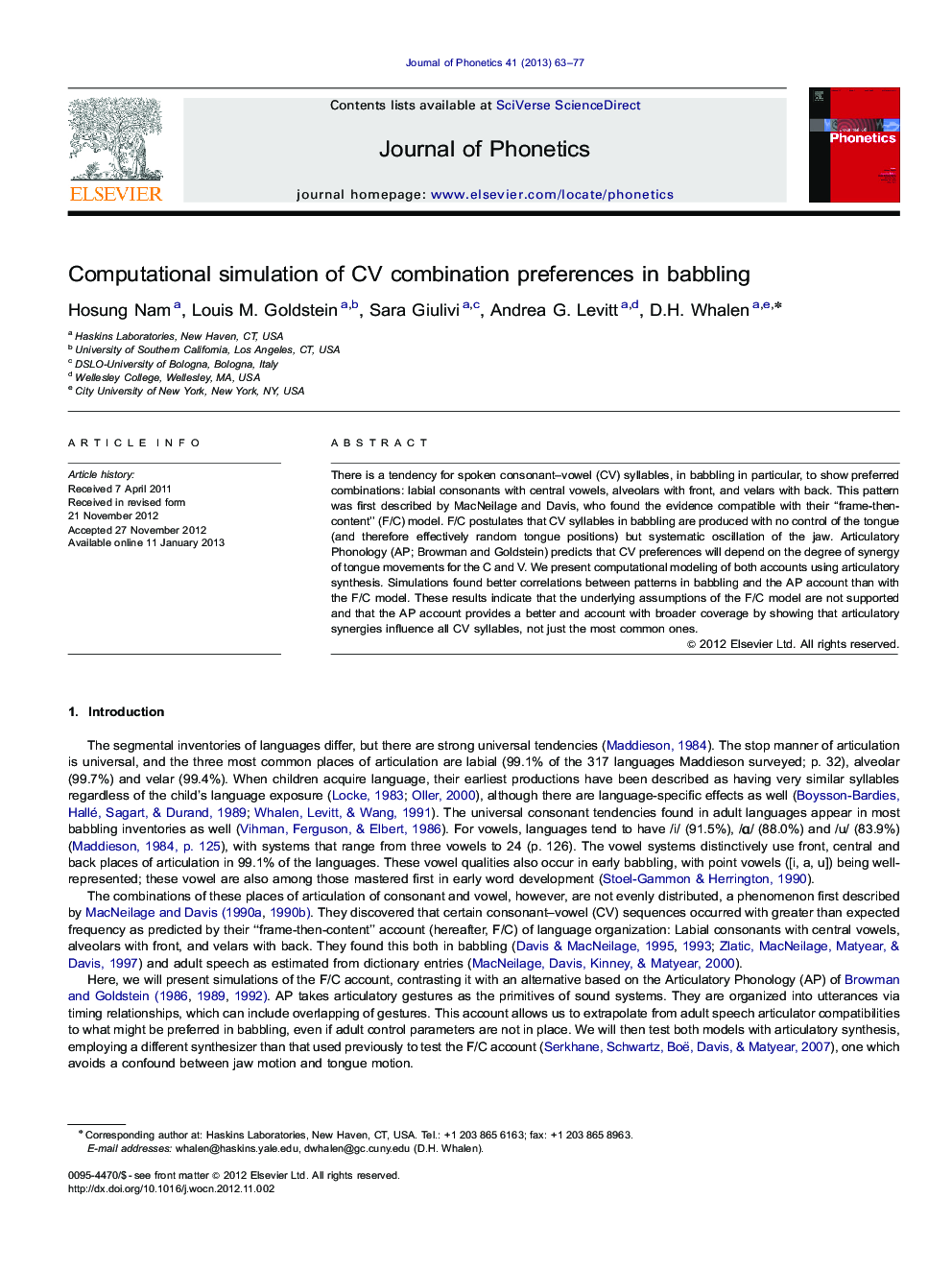| Article ID | Journal | Published Year | Pages | File Type |
|---|---|---|---|---|
| 1100943 | Journal of Phonetics | 2013 | 15 Pages |
There is a tendency for spoken consonant–vowel (CV) syllables, in babbling in particular, to show preferred combinations: labial consonants with central vowels, alveolars with front, and velars with back. This pattern was first described by MacNeilage and Davis, who found the evidence compatible with their “frame-then-content” (F/C) model. F/C postulates that CV syllables in babbling are produced with no control of the tongue (and therefore effectively random tongue positions) but systematic oscillation of the jaw. Articulatory Phonology (AP; Browman and Goldstein) predicts that CV preferences will depend on the degree of synergy of tongue movements for the C and V. We present computational modeling of both accounts using articulatory synthesis. Simulations found better correlations between patterns in babbling and the AP account than with the F/C model. These results indicate that the underlying assumptions of the F/C model are not supported and that the AP account provides a better and account with broader coverage by showing that articulatory synergies influence all CV syllables, not just the most common ones.
► There is a tendency that some CV combinations are preferred in babbling. ► Frame/Content (F/C) account attributes it to a dependence on random articulator positions driven by jaw motion alone. ► Articulatory Phonology (AP) attributes it to synergistic articulation of CV. ► We computationally simulate the two accounts to see which predicts better. ► Better prediction is found in AP than F/C.
